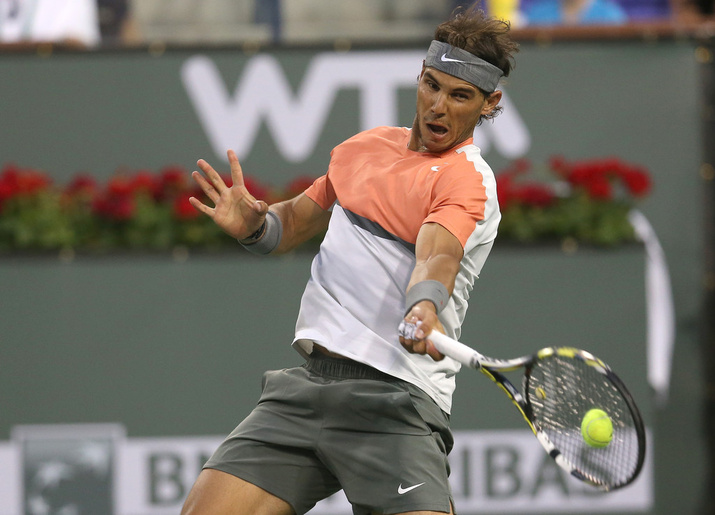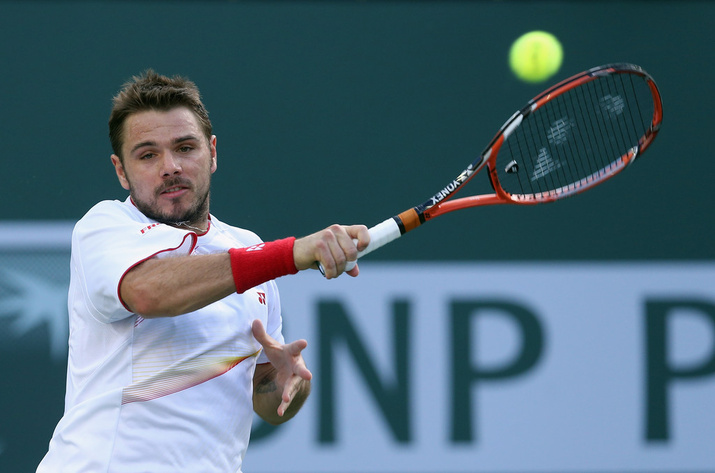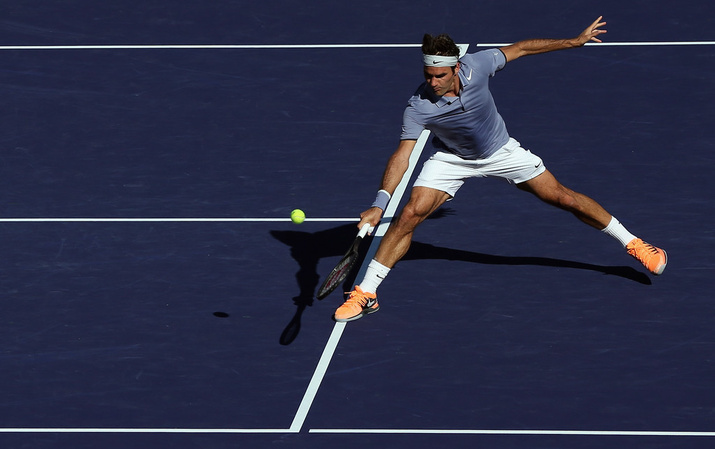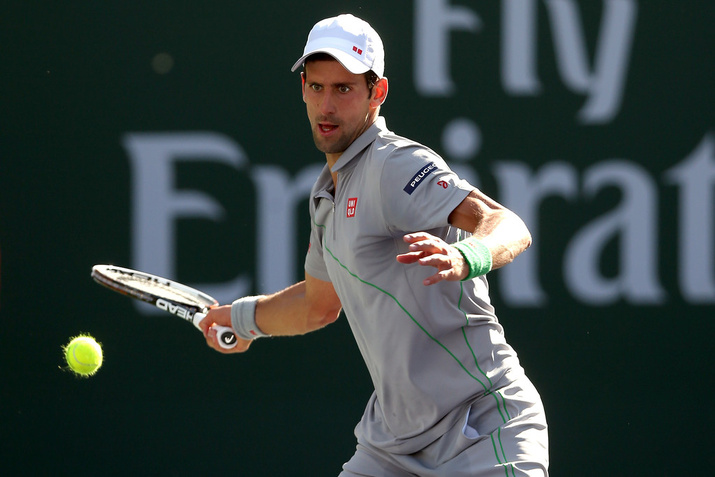Don't miss any stories → Follow Tennis View
FollowSurvival of the Fittest: Sony Open Men's Draw Preview
Just days after the thrilling Indian Wells final between Novak Djokovic and Roger Federer, those two champions open their title quests at the second Masters 1000 tournament of the season. A somewhat stronger field joins Djokovic and Federer in Miami, where the fitness of the top men will be tested by the humid conditions during the arduous battles ahead.

First quarter: Miami remains the only pre-US Open Masters 1000 tournament to elude world No. 1 Rafael Nadal, who has lost three finals here. Nadal saw his North American winning streak end in startling fashion at Indian Wells, but the silver lining to that early loss may see him bring more energy to this event. A more favorable draw awaits the top-ranked man in Miami, where he cannot meet any other member of the Big Four until the final. But Nadal should not overlook the dangerous serve of Jerzy Janowicz, a mercurial talent as capable as any of catching fire at the right time. Less ominous is the presence of Fabio Fognini, still indifferent on hard courts despite his impressive results on clay.
Also less ominous than it looks is the presence of Juan Martin del Potro, who thrilled Miami fans in 2009 by upsetting Nadal on this court. Del Potro withdrew from Indian Wells with a recurring wrist injury, so his entry to Miami comes as a slight surprise. Like Nadal, the 2009 US Open champion may need to defuse a tower of power before reaching the semifinals. Having upset Andy Murray at Indian Wells, Milos Raonic reminded viewers of his ability to challenge the top men. North American talents abound in this section, from Raonic and Vasek Pospisil to Ryan Harrison. The identity of Nadal’s quarterfinal opponent thus lies somewhat open to doubt.

Second quarter: The first loss of Stanislas Wawrinka’s breakthrough 2014 campaign came at Indian Wells, where he appeared to suffer a mild back injury. An overstuffed section of the draw confronts the Australian Open champion. The seed nearest to Wawrinka, Marin Cilic, already has won two titles this year and took a set from eventual champion Novak Djokovic at Indian Wells. Joining Cilic in this area is desert sensation Alexandr Dolgopolov, whose confidence soared to unprecedented heights when he upset Nadal and Raonic there. The flamboyant shot-maker will look to rush Tommy Haas out of his comfort zone in the third round.
Halted by Wawrinka in an Australian Open semifinal, Tomas Berdych had enjoyed a promising start to the season until he abruptly dropped his Indian Wells opener. While the Swiss must aim to slow Dolgopolov, Berdych faces the assignment of blunting John Isner’s momentum. That tall task comes after Isner has rejoined the top 10 and regained his confidence by reaching an Indian Wells semifinal. Eager to build on his success, the top-ranked American stands near compatriot and occasional doubles partner Sam Querrey. Little resistance should come from Nicolas Almagro, who has not played on a hard court this year after missing the Australian Open with a shoulder injury.

Third quarter: Despite his loss to Djokovic in the Indian Wells final, Roger Federer exuded satisfaction and belief from his performance in the desert. The Swiss never has enjoyed squaring off with Ivo Karlovic, but he generally has found ways to stifle the Croatian giant. After that opening-round test, the path grows smoother for Federer. Although Richard Gasquet clings to his perch in the top 10, February losses to opponents like Philipp Kohlschreiber and Ernests Gulbis will not have given him the confidence needed to defeat the Swiss on a hard court for the first time. Fernando Verdasco never has defeated Federer anywhere, while Kevin Anderson found no solutions when they met at Indian Wells last week.
Like archrival Nadal, Federer drew a possible quarterfinal opponent who has struggled with injury in recent weeks. David Ferrer withdrew from Indian Wells but will attempt to defend some of his finalist points in Miami. The man best positioned to profit from the Spaniard’s rustiness joined him in the Australian Open quarterfinals. Grigor Dimitrov never has defeated Federer, the man upon whom he modeled his game, but he upset Ferrer last fall to win his first career title. The steady Kei Nishikori might find his game more suited to the very slow hard courts in Miami than Dimitrov’s style. This product of the Bolletieri Academy also may adjust more smoothly to the Florida humidity.

Fourth quarter: If Novak Djokovic received the softest draw at Indian Wells among the Big Four, he arguably received the most challenging draw at Miami. The BNP Paribas Open champion dug deep rather than dominating for most of that tournament, surviving four three-setters and nearly letting the final slip away against Federer. Still, Djokovic will have gained confidence from striking his first blow of 2014 against one of the Big Four, and he completed the Indian Wells/Miami double in 2011. To repeat the feat, he might need to blunt the power of Ernests Gulbis, a quarterfinalist in the desert. Gulbis has shone in the spring for the second straight season, but he will find Tommy Robredo a test of his consistency. The durable Spanish veteran even has troubled Djokovic on American hard courts before.
The reason why Djokovic has the most challenging draw? He might need to defeat every other member of the Big Four to win this title. While Federer looms in the semifinals and Nadal in the final, Andy Murray might await in a quarterfinal rematch of two previous Miami finals. The fellow 26-year-olds split those key meetings and have split their four major finals, showing that almost nothing separates them on any given day. Murray has not found his best form since returning from back surgery, reaching the semifinals at only one of eight tournaments since winning Wimbledon. But the styles of Murray’s early opponents, such as Feliciano Lopez, play into his hands by offering him chances to showcase his returns and passing shots. And Jo-Wilfried Tsonga has lost 21 of his last 24 matches against the top 10, a group where he no longer belongs.










